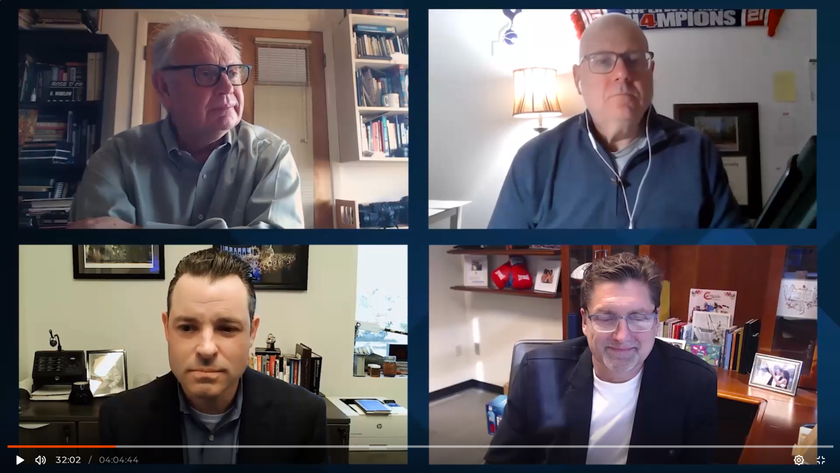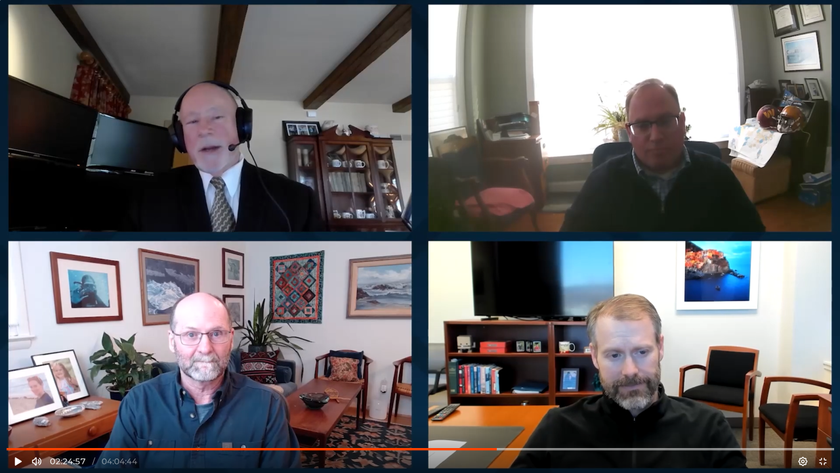TVT Team: What to Know Before You Go to the 2016 NAB Show
Heading to the 2016 NAB Show? Wondering how to organize your time and attention? In addition to our annual voluminous preview of new products at the annual extravaganza, we’ve surveyed our writers and columnists on what they expect will be hot at this year’s show. Hope to see you there!

CRAIG JOHNSTON, Correspondent
A few short months ago at CES, the new feature buzzword for the latest and greatest flat-screens was HDR, aka Ultra HD Premium. Not only does HDR include a high contrast ratio, but also 10-bit color, enabling a vastly expanded range of color shades.
What this means for the NAB Show is that acquisition equipment with the capability of capturing HDR-level video will be shown. Cameras and lenses will tout their contrast and color specs. And not to be forgotten are production monitors for viewing scenes accurate to the way they’ll be displayed to the audience at home on their new monitors.
Where 8K video was kind of a science experiment last year, at the 2016 NAB Show we’ll see actual production models of 8K gear. It’s got to be ready, because over 100 hours of coverage of the Rio Olympic Games will be broadcast in 8K for Japan TV audiences this summer.

JAY ANKENEY, Focus on Editing
When visitors to the 2016 NAB Show enter the LVCC, they’ll be stepping through a Looking Glass of irreality. To keep in sync, I’m going to adopt the Carol Burnett “ear tug” when I need to remind myself that a real world still exists outside.
For example, almost every screen you’ll see will display a 4K resolution that’s above the human eye’s acuity level to appreciate from a normal viewing distance. Sure 4K is a great engineering tool, and swell for throwing cinema-sized images on a silver screen, but does it provide any benefits to normal human viewing over the HD it is replacing? And the Rio Summer Olympics Opening and Closing Ceremonies are going to be in 8K! Tug/Tug:Ouch!
Augmented and virtual reality are expected to be the hit buzzwords at this year’s techno-gala. So despite all the upscaled and downcost new hi-res cameras, once their images are processed through the wizardry of post production and get their “Reality” adjusted, who is going to be able to tell what is real or not? Tug/Tug:Ouch!
But the kicker is that with all the energy churning our current broadcast delivery system, there will be visionaries busily conjuring up a scheme that will make it all obsolete under the banner of ATSC 3.0 that is not backward compatible. Just after transitioning to digital delivery and HD viewing, are we really being asked to buy a whole new generation of home equipment? Tug/Tug:Ouch!

AL KOVALICK, Cloudspotters Journal
Look for themes related to the transition to IT. One hot spot is the replacement of SDI transport with IP and Ethernet-based technologies. In the long term, there will be a convergence to ongoing SMPTE standards. However, mid-term, different “vendor camps” have staked out ground and are identified by names such AIMS, ASPEN, and NMI. These user camps use slightly different approaches to mapping media-over-IP. In most cases, the media transports are interoperable, using bridges. Some members are in more than one camp.
Another theme is the decline of desktop software being replaced by apps and Software-as-a-Service (SaaS). Look for vendors that offer browser-based applications. These offer the most flexibility and are cloud friendly. Ask vendors: “Do your applications run in a browser? If not, why not?”
Of course, there is a trend toward the cloud. So, ask vendors if their software will run in under compute virtualization. Also, are their solutions tested to run in a public or private cloud environment? Ask also if their products can seamlessly work in a hybrid system; part local and part remote cloud.

JAY YEARY, Inside Audio
It will be interesting to see what the future holds for Pro Tools after the massive audio product team layoffs that occurred at Avid in January and now that the majority of the features promised since the announcement of Avid Everywhere have been delivered, including the long-awaited Cloud Collaboration that arrived with v12.5.
ATSC 3.0 is on an aggressive timetable and it now appears that AC-4 has been leaked as the technology we’ll use in the U.S. for object-based and immersive audio. There should be plenty of technology demos at the show.
I’m most excited about the rollout of new audio-over-IP technology products, including those already announced by Calrec and SSL. It would be nice to also see better integration of systems from the manufacturers utilizing AES67, especially when it comes to devices discovering each other and working together. Audio-over-IP is a fantastic solution and its success or failure will likely hinge on whether or not manufacturers allow their devices to work together transparently.

MARIO ORAZIO, The Masked Engineer
Mama mia… Las Vegas in an election year! Talk about a gambler’s paradise; only makes me wanna hide under the daybed—when it comes to technology, I’m what they call “risk averse.”
But that doesn’t mean I don’t have a couple o’ sure bets in mind for this year’s NAB Show. On the infrastructure front, I’m expectin’ YUGE things from IP; at last year’s show, it was all rumors and innuendo, and you know what Groucho said… “Love flies out the door when money comes innuendo.” This year, we’re supposed to see real devices, real interconnects, and real results. If so, I’ll be really impressed.
Some of my expectations are purely based on the “time-marches- on” thing; I’m lookin’ for upgrades to streaming appliances and transmission solutions; for cheaper and better OLED monitoring and 4K recorders… show me 12 months’ worth of improvements, please.
And there was this really cool, totally modular, “open source cinema” crowd-funded camera system lurking around the show last year… hoping to see that puppy displayed and demo’ed.
Odds are, I’d vote for any of those candidates.
Get the TV Tech Newsletter
The professional video industry's #1 source for news, trends and product and tech information. Sign up below.
Tom has covered the broadcast technology market for the past 25 years, including three years handling member communications for the National Association of Broadcasters followed by a year as editor of Video Technology News and DTV Business executive newsletters for Phillips Publishing. In 1999 he launched digitalbroadcasting.com for internet B2B portal Verticalnet. He is also a charter member of the CTA's Academy of Digital TV Pioneers. Since 2001, he has been editor-in-chief of TV Tech (www.tvtech.com), the leading source of news and information on broadcast and related media technology and is a frequent contributor and moderator to the brand’s Tech Leadership events.













